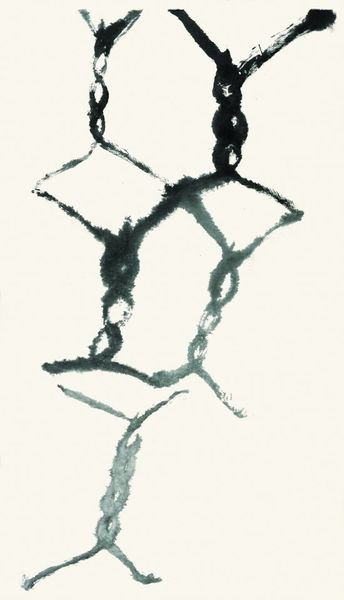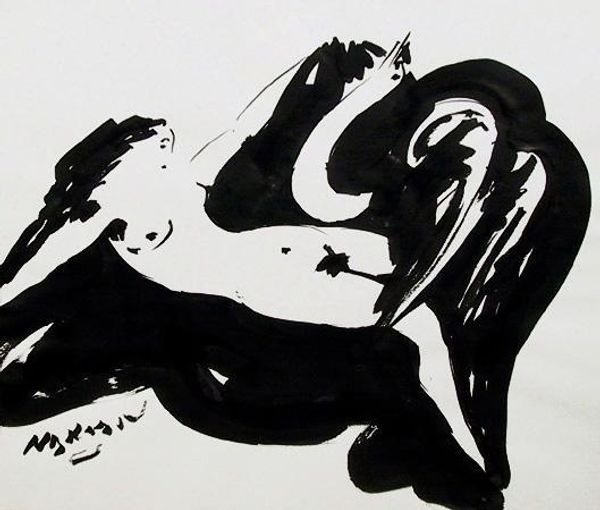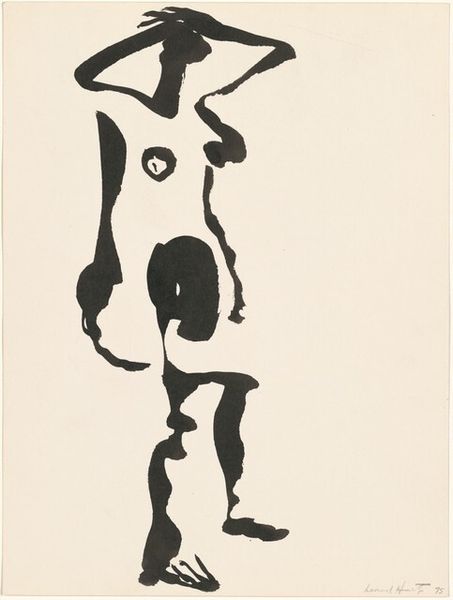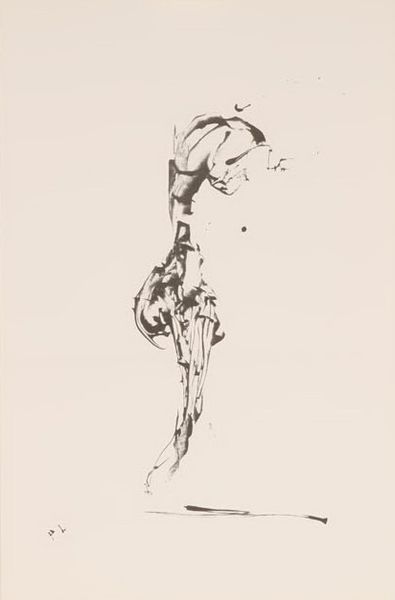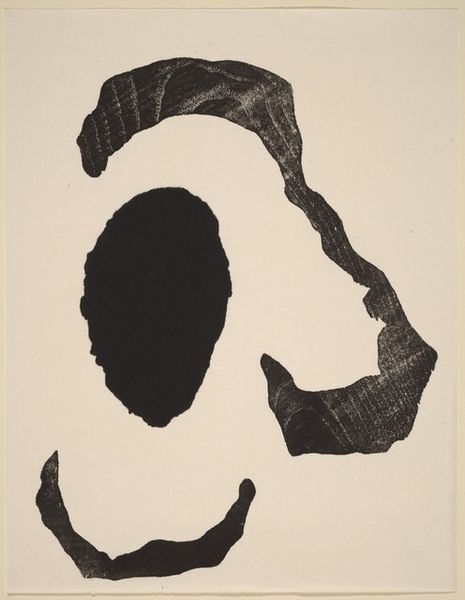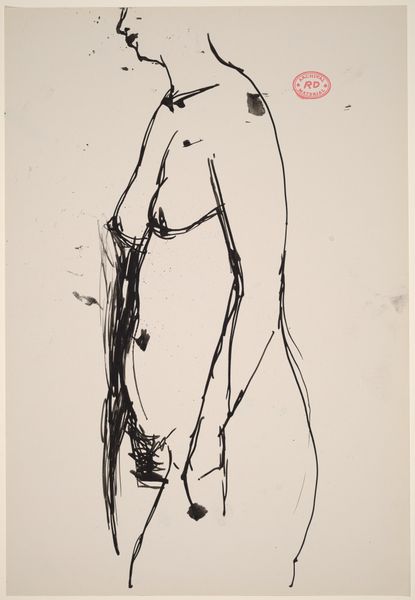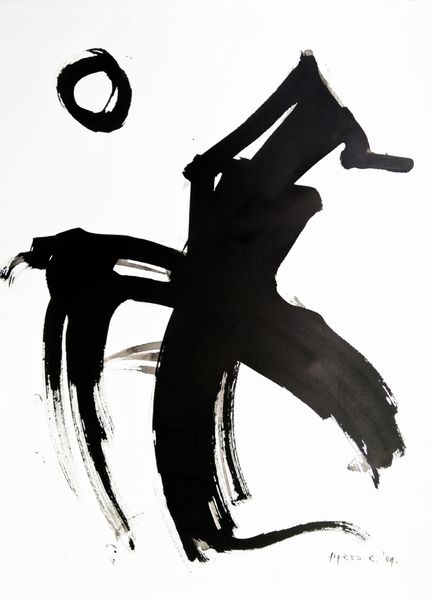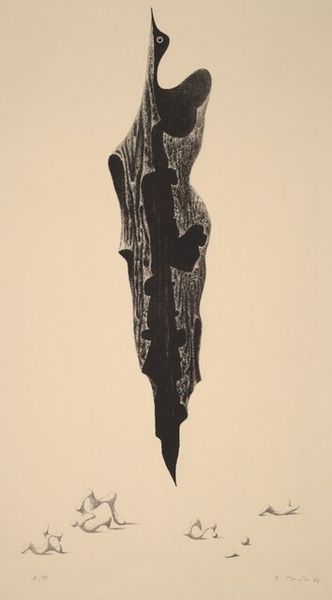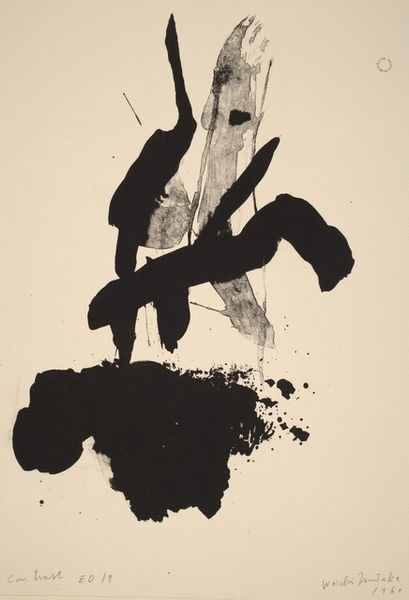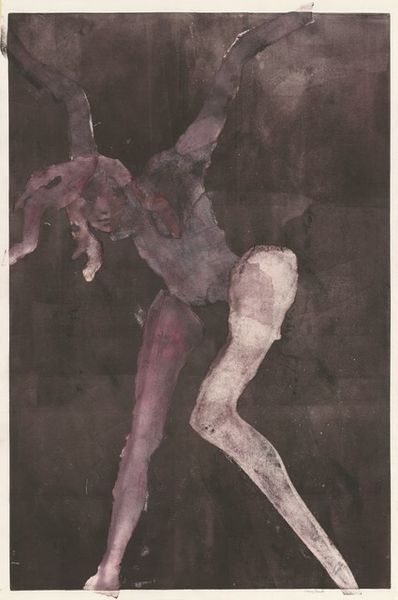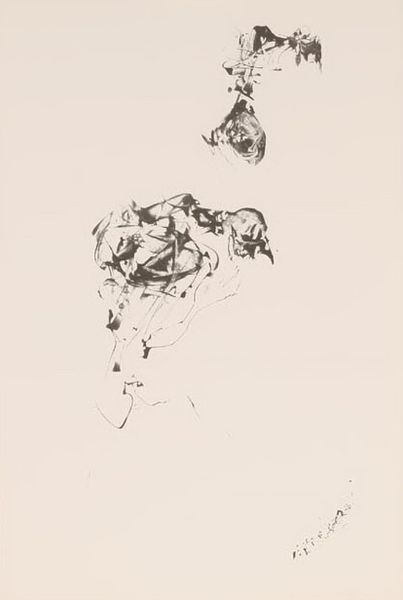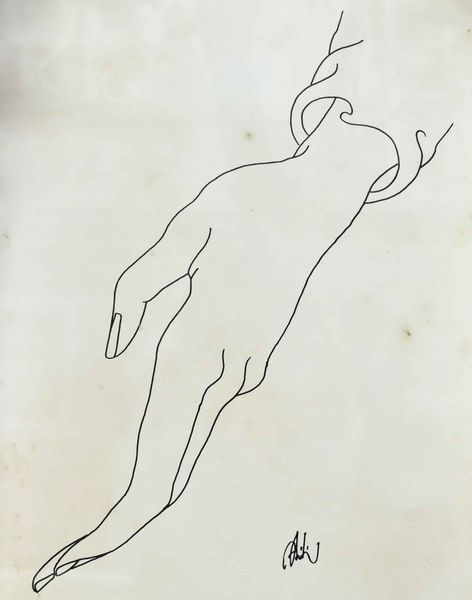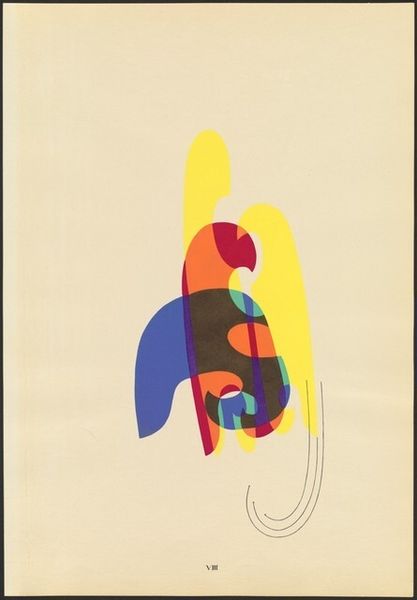
drawing, ink
#
drawing
#
figuration
#
ink
#
nude
Dimensions: sheet: 30.16 × 22.7 cm (11 7/8 × 8 15/16 in.)
Copyright: National Gallery of Art: CC0 1.0
Curator: This is "Standing Nude," an ink drawing by Leonard Horowitz, created in 1975. Editor: Stark. It’s arresting in its simplicity, really—just black ink on a white ground. It gives the figure such immediacy, like she’s been ripped from a shadow. Curator: It's interesting you mention shadows. In art historical terms, the stark contrast speaks to the anxieties present in figuration during the 1970s. Think of the post-war disillusionment and second-wave feminist critiques of the male gaze. Editor: Yes, and looking at the making of it, the ink seems applied rapidly, almost gesturally, highlighting the physicality of the drawing process itself. See how the application varies. Some parts bleed a little as the paper absorbs it; in other parts the texture is flatter, more concentrated, where the ink sits on the surface. Curator: Exactly. That bold, almost rough quality contributes to its political impact. Consider how it deviates from idealized nudes we've seen for centuries. Instead of the objectified body, we have this...assertive presence. There's tension between vulnerability and agency, challenging conventional art's relationship to women in visual culture. Editor: The negative space too is active, not empty. The shapes cut by the figure are compelling on their own. You could analyze the texture of the page—the support—but it remains concealed beneath the artist's brush. How might the use of different material and methods influence perceptions of both the labor of the artist, and the way this figure comes into being? Curator: An important observation; it's a dynamic relationship that challenges assumptions about art's social purpose and invites questions of who it represents. In fact, in terms of the institutions supporting such art, Horowitz's piece serves to invite new representation in a way that wasn't done before. Editor: Thinking of process then, I see this work as a document, recording the material properties, but more importantly the artist's very physical performance and relationship to materials. Curator: So, we’re left contemplating not just the figure, but the socio-political context, the female gaze, and their effects on this work of art. Editor: I’m going to leave wondering about how Horowitz uses minimal means to convey a substantial experience of the human body.
Comments
No comments
Be the first to comment and join the conversation on the ultimate creative platform.
